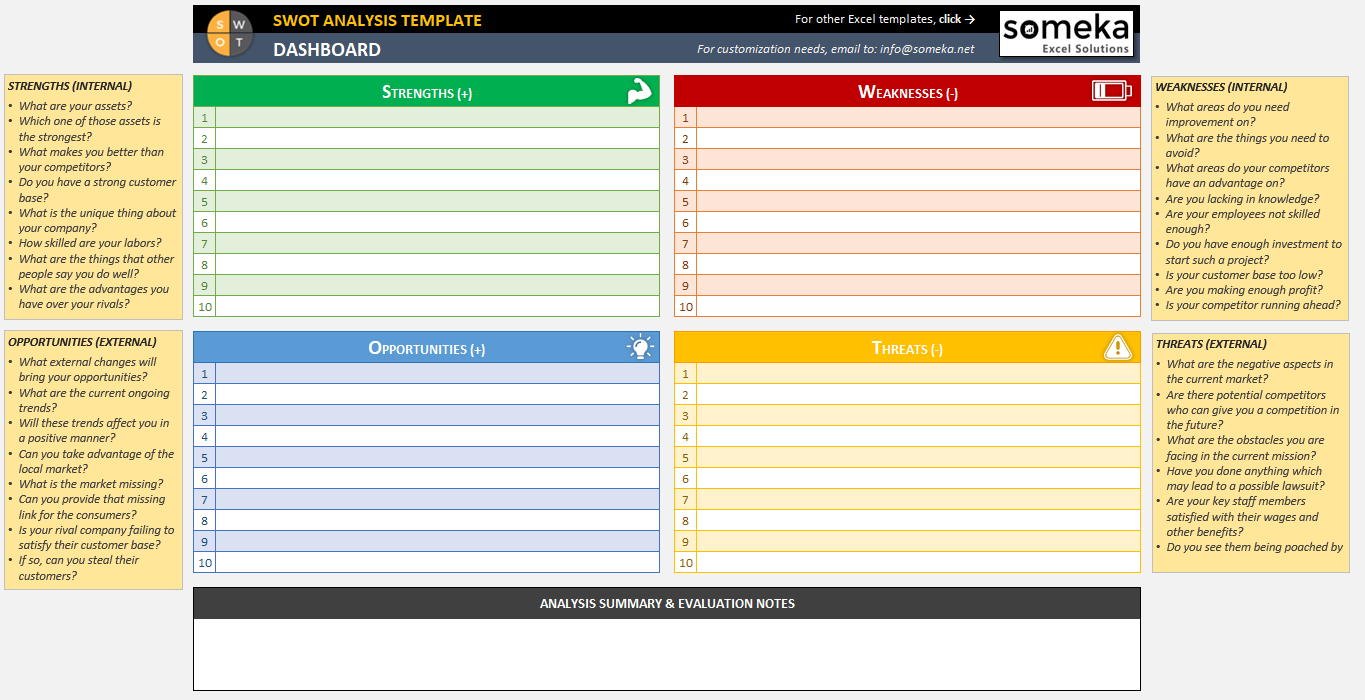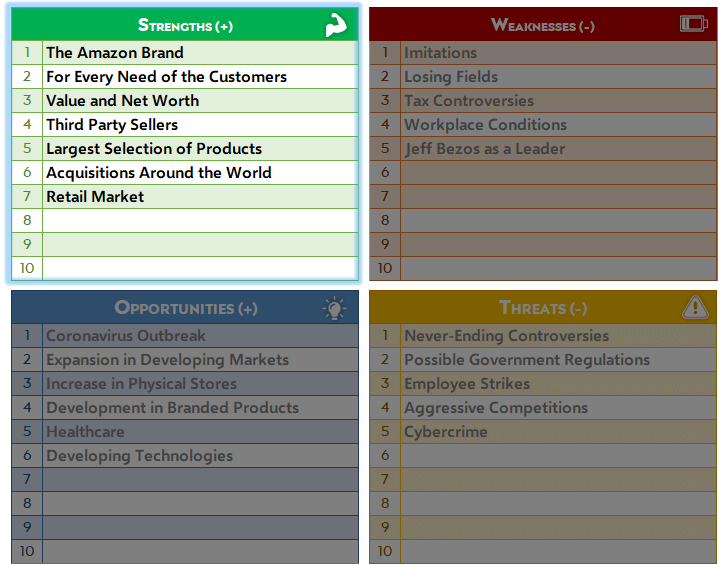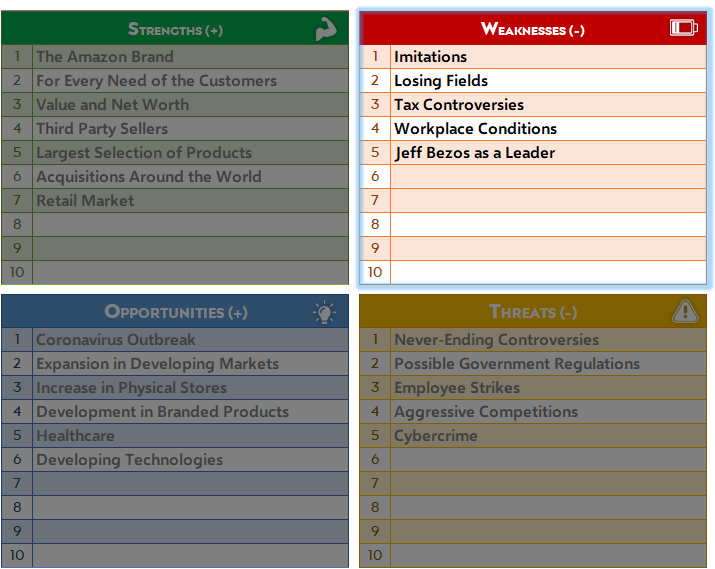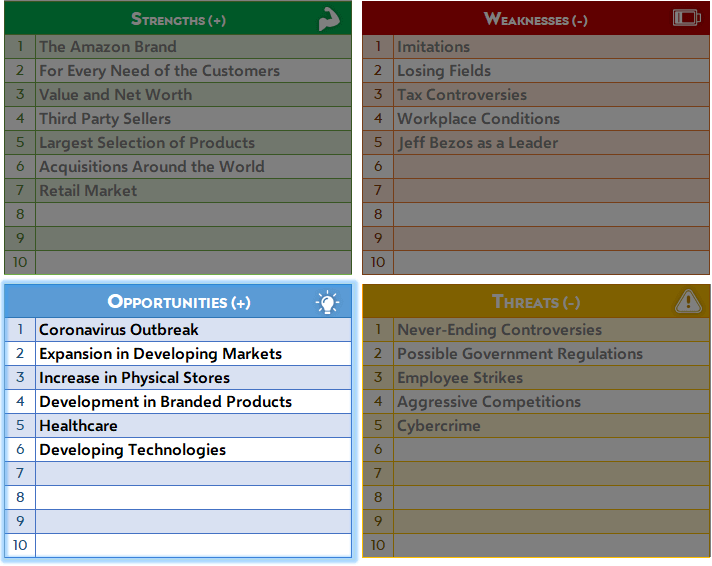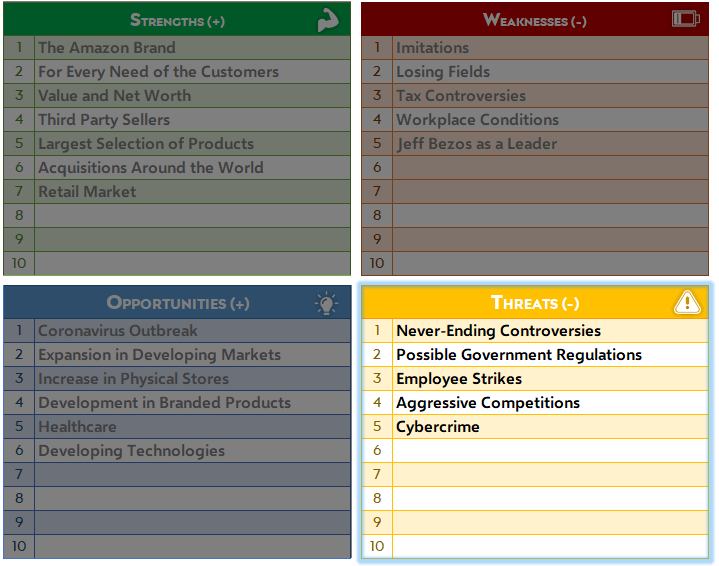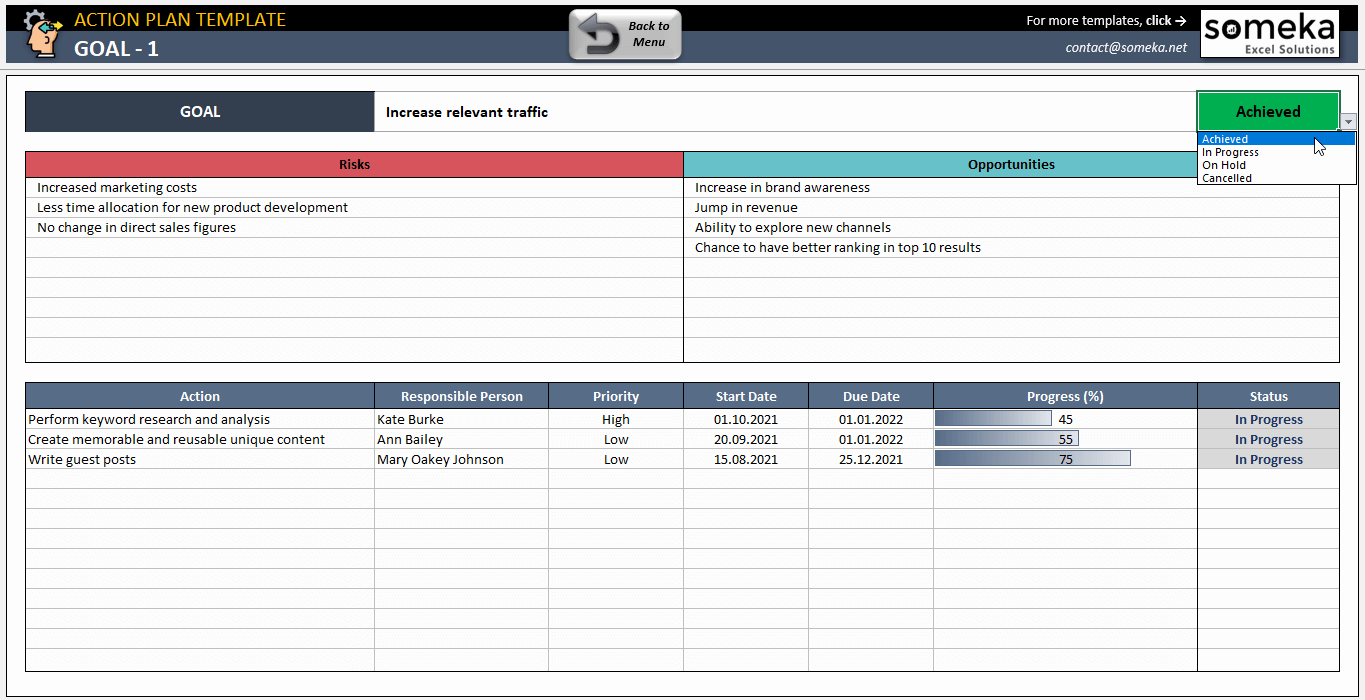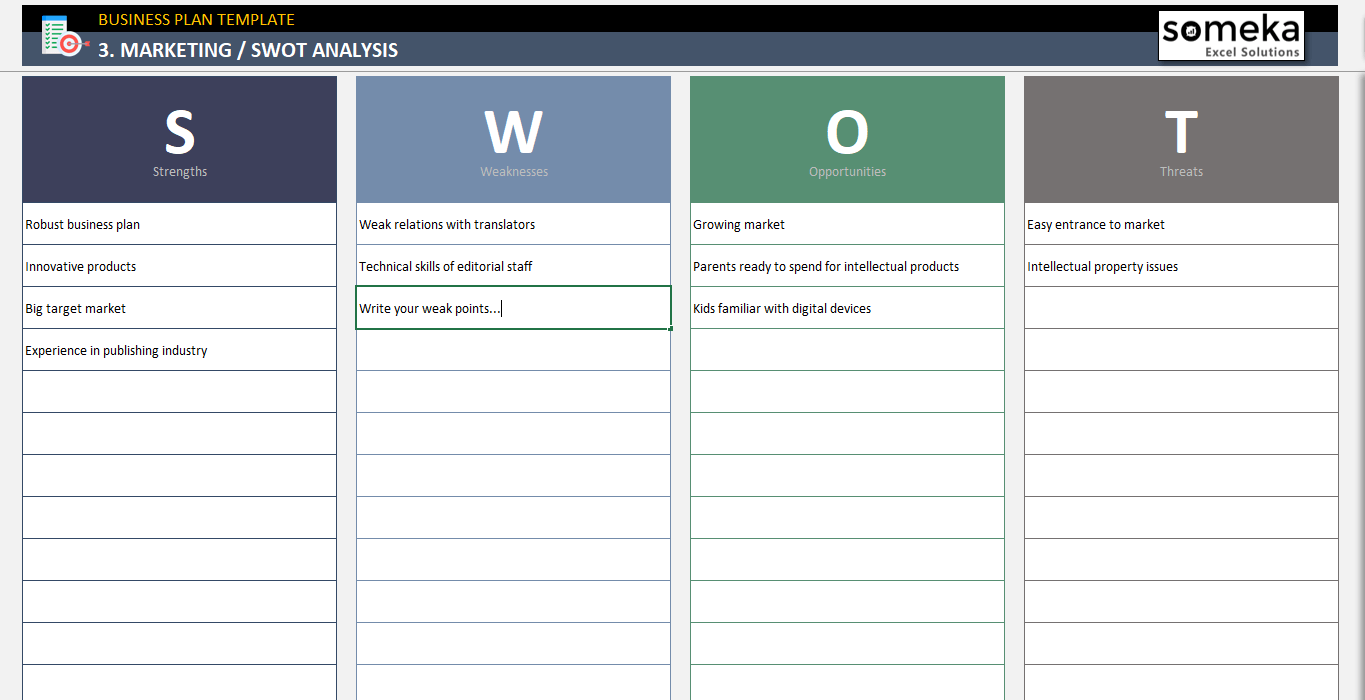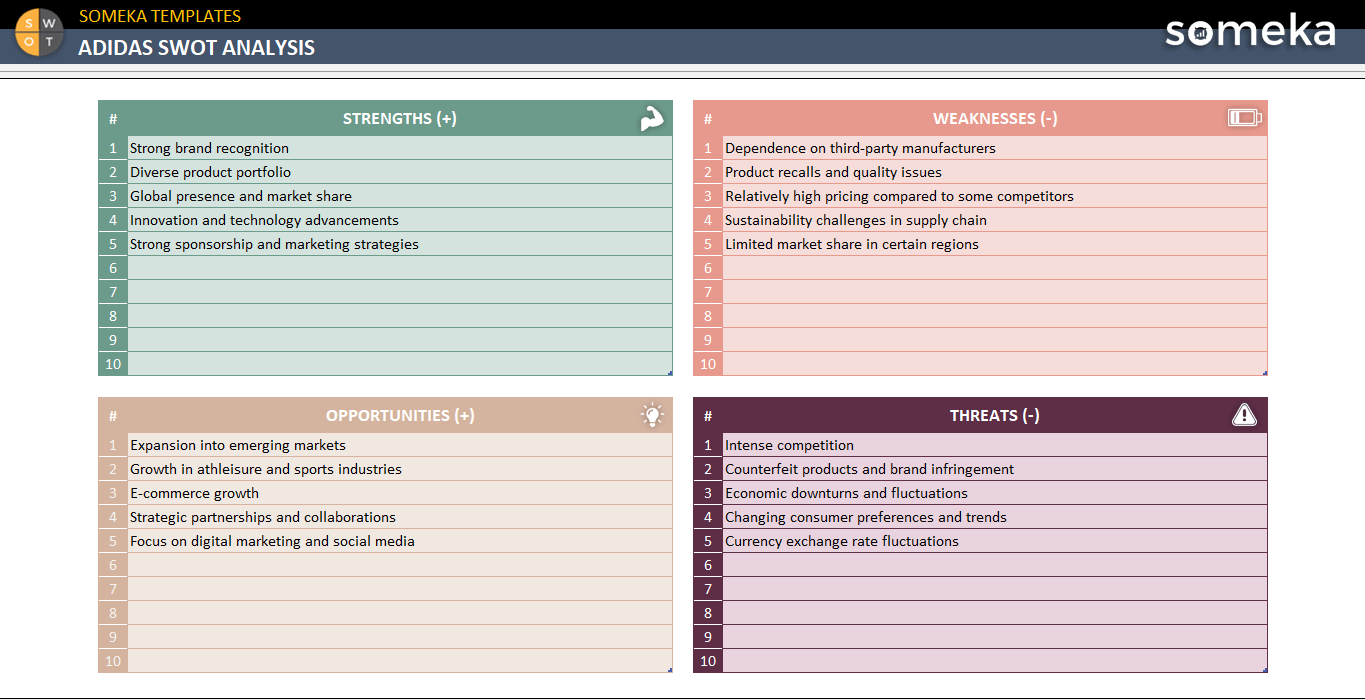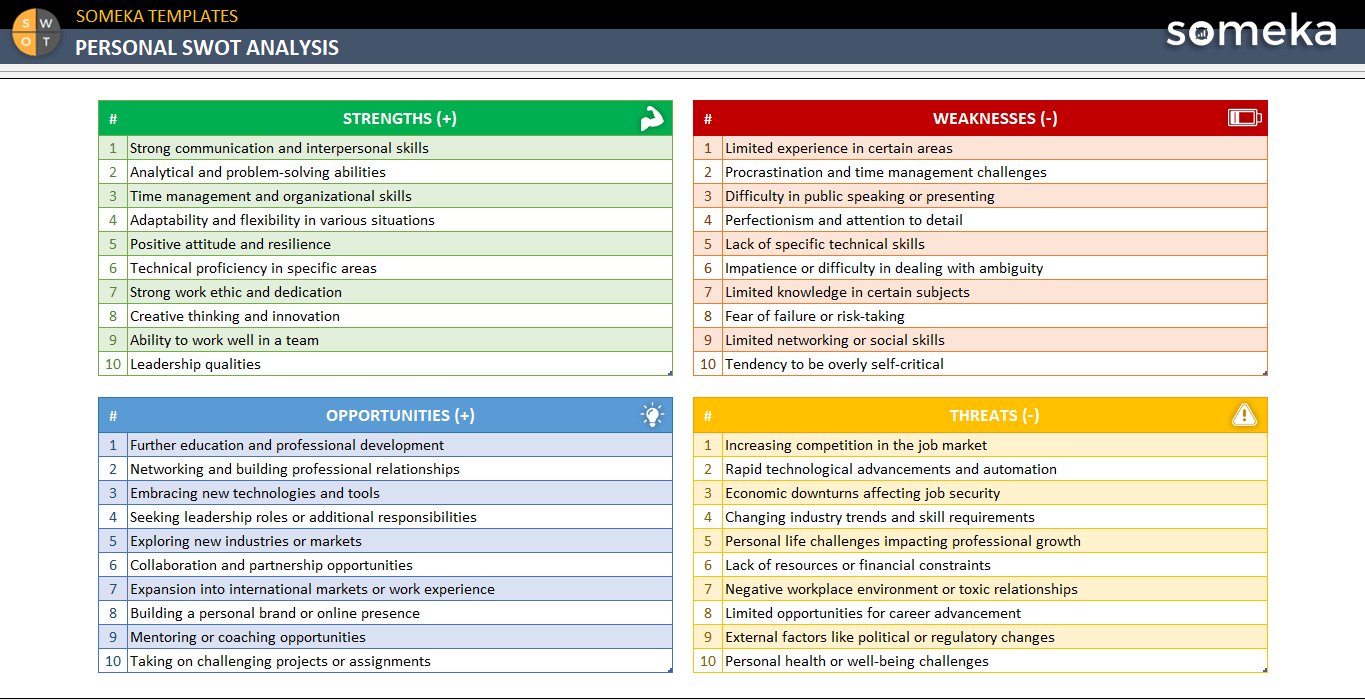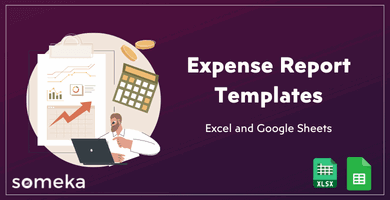
How to do a SWOT Analysis? With Templates and Examples
SWOT Analysis is definitely one of the most known business tools to evaluate the future insights for a company or an organization. But do you now how to do a SWOT analysis in an effective way? This article will discover all the details of a clear and efficient SWOT process.
Table Of Content
1. What is a SWOT analysis?
2. What does SWOT stand for?
3. How to do a SWOT analysis?
4. Effective Questions for SWOT Analysis
5. Why is a SWOT analysis important?
6. SWOT Analysis: Pros and Cons
7. When should you use a SWOT analysis?
8. Expert Tips: How do you write a good SWOT analysis?
9. SWOT Analysis Examples
10. Conclusion
Among the many time-tested methods for helping companies find their place in the market, the SWOT analysis has proven to be an invaluable asset. The method’s adaptability makes it useful for both internal and external source identification of opportunities and threats to a company.
If you’re a nonprofit trying to grow, a for-profit business planning to introduce a new product, or a startup trying to break into the market, a SWOT analysis is a must-have tool.
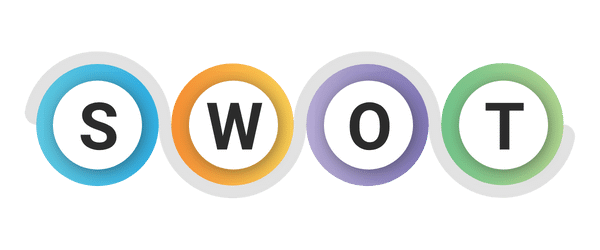
1. What is a SWOT analysis?
A SWOT analysis is a structured planning method used by individuals and organizations to evaluate the Strengths, Weaknesses, Opportunities, and Threats related to business competition or project planning.
Despite its seeming lack of complexity, a SWOT analysis is capable of yielding profound insights. So, stakeholders can find the best places to make changes and use their influence by dissecting the internal and external variables that impact an entity.
>> Download SWOT Analysis Excel Template
Also, in most cases, an organization’s strengths and weaknesses are things that exist on the inside, such as its resources, systems, and processes. On the flip side, opportunities and threats are things outside of your control, such as changes in the market, the economy, or new technologies.
Additionally, business, marketing, personal career planning, and many more fields can all benefit from this versatile tool. So, an organization’s present position and future prospects can be better understood by conducting a SWOT analysis, which outlines the positives and negatives of the organization’s internal and external environments.
2. What does SWOT stand for?
Here’s a closer look at what each term represents in the context of a SWOT analysis:
- Strengths: These are internal attributes and resources that support a successful outcome. Strengths are what the organization excels at or possesses more advanced capabilities in comparison to competitors. This could include a strong brand reputation, a loyal customer base, unique technology, exclusive access to the best natural resources, or favorable distribution networks.
- Weaknesses: These are internal factors that might hinder the achievement of an objective. Weaknesses detract from the value offer and could place the organization at a disadvantage. Examples might include gaps in expertise, limited resources, poor location, inadequate supply chains, or inferior technology compared to competitors.
- Opportunities: External chances to improve performance in the environment. Opportunities reflect the potential you can leverage to grow your business or project. They might arise from market growth, lifestyle changes, technological advances, partnerships, and other external factors that offer a compelling avenue for expansion or improvement.
- Threats: External challenges that could cause trouble for the business or project. Threats might stem from various sources like economic downturns, increased competition, changes in regulatory landscapes, or other external risks that could impact the entity’s success negatively.
Understanding each of these components in detail allows organizations and individuals to craft strategies that capitalize on the strengths and opportunities while mitigating the weaknesses and threats.
3. How to do a SWOT analysis?
An organization or project’s internal and external environments can be examined using a clear and structured approach in a SWOT analysis. To make sure the analysis is thorough and effective, it can be divided into several steps:
Step 1: Prepare your SWOT layout
First things first, select your platform to perform SWOT analysis and prepare your layout.
Step 2: Assemble a Group for SWOT Analysis
Definitely, multiple viewpoints add depth to SWOT analysis. Thus, gather a group of people with different backgrounds and areas of expertise to get a complete picture. Then, your analysis is more thorough and accurate because of this inclusivity.
Step 3: Make a List of Your Strengths
Thirdly, write down all the personal qualities and assets that will help you reach your goal.
Think about the strengths, resources, and competitive advantages of your company. Intellectual property and other physical assets are part of this category, as are intangible assets like company culture and reputation.
Step 4: Identify Your Weaknesses
Then, recognize the internal variables that may impede your advancement.
Maintain objectivity and honesty; admitting fault is the first step in fixing it. Think about potential weak spots in your company or areas where your competitors could excel.
Step 5: Seek Out Opportunities
Also, seek out possibilities for expansion or enhancement outside of your current organization.
Any external factor that your organization could use to its advantage could be considered here, including trends, changes in technology, market gaps, and so on.
Step 6: List your Threats
Lastly, in a similar vein, you should be aware of the outside forces that might endanger your company.
Any outside force that might have a detrimental effect on your company qualifies, whether it be changes in regulations or intense competition.
Step 7: Evaluate your SWOT Analysis results and prepare your Action Plan
Now that you have all the factors listed, it’s time to think about them and figure out how they could affect things.
Sort the SWOT analysis elements in order of how important they are to achieving your goal. You should formulate plans to take advantage of opportunities, fix weaknesses, and lessen the impact of threats. Embrace opportunities when they come, shore up your weak spots, build on your strengths, and fortify yourself against outside dangers.
Turn your strategies into a workable plan with defined objectives, roles, and due dates. In order to transform insights into outcomes, this step is vital.
So, define your goals with risks and opportunities, then list your actions. Also, it’s important to be definitive in your actions with clear mentioning of responsible person, priority, due dates. Lastly, you can use Someka’s action planning tool here to make effective preventive and corrective action plans:
>> Download Action Plan Excel Template
Step 8: Update your SWOT analysis regularly
The external environment and your internal capabilities are subject to change, so it’s important to review regularly. If you want your strategies to stay effective, you need to revisit and update your SWOT analysis regularly.
What follows is an examination of the kinds of questions that might be asked at various points in a SWOT analysis in order to glean useful information.
4. Effective Questions for SWOT Analysis
One of the most important parts of how to do a SWOT Analysis is to ask the right questions for an accurate evaluation.
If you want your SWOT analysis to be really comprehensive, you need to ask lots of questions to get to the bottom of your company’s internal and external environments. For each group, here are some sample questions:
Strengths
- What advantages does your organization have over others?
- What unique resources can you leverage?
- What do others see as your strengths?
- What is your organization’s competitive edge?
- What processes are efficient, and what expertise do you have?
Weaknesses
- What areas need improvement to compete more effectively?
- What resources do you lack?
- What parts of the business are not profitable?
- What are the perceived weaknesses of your organization?
- Where does your organization have fewer resources or capabilities than others?
Opportunities
- What trends or market conditions could you exploit to your advantage?
- Are there emerging needs for your products or services?
- What technological advancements can you leverage?
- How can you turn your strengths into opportunities?
- Are there changes in social patterns, population profiles, lifestyle changes, etc., that suggest an opportunity?
Threats
- What obstacles do you currently face?
- Are there new competitors entering your market?
- Could any of your weaknesses seriously threaten your business?
- Are there changes in regulations that could impact your business negatively?
- Is your market or industry declining?
Answering these questions requires honest and critical thinking.
The goal is to uncover insights that can inform strategic decision-making and help prioritize actions that align with the organization’s objectives.
5. Why is a SWOT analysis important?
Firstly, one of the most important parts of strategic planning is doing a SWOT analysis. The SWOT analysis is useful for many reasons, including the following:
- Better understand your company with insights from different angles
- Grab the chances to grow and expand
- Identify weaknesses and threats with a proactive approach
- Help with strategic planning
- Encourages dispassion by minimizing the influence of personal biases on decision-making
- Encourage better communication and cooperation amongst employees
- More informed decisions with better allocation of resources, clearer strategic direction, and higher performance
These are only some general angles that why a SWOT analysis is important for your organization.

6. SWOT Analysis: Pros and Cons
The ease and efficacy of a SWOT analysis have made it a popular tool for strategic planning. Yet, it does have its uses and limitations, just like any other tool:
The Pros:
- Flexibility
- Ease-of-use
- All-Inclusive
- Prompts Strategic Thinking
- Helps with Decision-Making
- Boosts teamwork and communication
The Cons
- Chance of oversimplification
- Risk of imprecision
- Lack of prioritization
- Need for regular update
- Lack of actionable recommendations
In spite of these caveats, a SWOT analysis is still an excellent resource for strategic planners. It can yield potent insights to direct strategy and decision-making when executed with care, with a dedication to objectivity and continual improvement.
7. When should you use a SWOT analysis?
Definitely, a SWOT analysis comes in handy in the following important situations:

Strategic Planning Process: Organizations can use it to gauge where they are now and plot a course for future development and improvement.
New Product or Project Launch: Before releasing a new service, product, or project to the public, it is wise to conduct a SWOT analysis to weigh the pros and cons of the endeavor.
Competitive Analysis: A SWOT analysis is a useful tool for comparing your company’s strengths and weaknesses to those of your rivals in a competitive analysis.
Responding to Changes in the Market: You can assess the effects of external changes on your organization plan your adaptation strategies for changes like new regulations, technology advances, or changes in consumer behavior.
Organizational Change: Also, this analysis can help shed light on the internal and external factors that will impact the change process during organizational restructuring.
Crisis Management: This methodology can be a useful tool for organizations during times of crisis.
Additionally, SWOT Analysis are an important part of your business plans. So, if you’re preparing a business plan for your stakeholders, creditors, partners, clients, or other third-parties, you should also add a swot analysis to draw a general picture of your business prospects:
>> This is the SWOT Analysis section of Business Plan Excel Template from Someka collection <<
8. Expert Tips: How do you write a good SWOT analysis?
Here are 8 expert tips for an effective SWOT analysis process:
Don’t be vague, instead be specific!
As an illustration, rather than mentioning “good customer service” as a strength, go more specific by stating what makes your customer service stand out, like “24/7 customer support with an average response time of under 1 hour.”
Make use of real data!
Back up your claims with concrete, measurable facts. Indicators of financial performance, surveys of customers, and analyses of the competition are all examples of what may fall into this category. The validity and accuracy of your SWOT analysis are enhanced by data-driven insights.
Involve all related parties!
To get a full picture, it’s important to include people from different departments and roles in the company. Taking a step back and looking at things from a different angle can help us see things more clearly.
Look Outside!
While taking stock of your company’s internal strengths and weaknesses is a must, it’s also a good idea to take a step back and examine the outside world for opportunities and dangers that you may have missed. Trends in the market, new technologies, and changes in regulations could all be part of this analysis.
Make a ranked list!
The implications of each of the factors presented in a SWOT analysis on your goals will vary. You should rank each factor according to how much it can affect your objectives. By doing so, you can direct your plan’s attention to what’s really important.
Always be truthful!
A SWOT analysis relies on your candor. Poor strategic decisions can result from exaggerating one’s strengths or downplaying one’s weaknesses. Strategies should be based on the organization’s actual capabilities and situation, which can be achieved through a realistic appraisal.
Connect SWOT to strategies!
A SWOT analysis’s end goal is to help with strategic decision-making. After identifying each element, plans should be made to take advantage of opportunities, fix weaknesses, and protect against threats.
Make use of it to begin a conversation!
If you want to get your employees talking about strategy, a SWOT analysis is a great tool to use. Make use of it to get your team members thinking creatively and strategically about ways to improve and innovate.
9. SWOT Analysis Examples
Perhaps, the best way to understand how to do a SWOT Analysis is explore the examples of such evaluations.
Among our examples, let’s first check the the Adidas SWOT Analysis:
>> Download Adidas Swot Analysis Example
As one of the biggest sportswear companies, Adidas has strengths of strong brand recognition, diverse product portfolio, and big global presence. On the other hand, among the biggest weaknesses, the company has a high dependence on third-part manufacturers, limited market share in certain regains, and sustainability challenges in supply chain.
On the external factors, we see some opportunities on expansion into emerging markets, e-commerce growth and strategic partnerships. However, intense competition, brand infringement, economic downturns and changing customer preferences are among the threats on the company.
Let’s check another example for an Personal SWOT Analysis:
>> Download Personal SWOT Analysis Template
So, this is an individual SWOT example for an hypothetic person. Among the strengths, we can see strong communication skills, analytical abilities, time management skills, leadership qualities, etc. And on the opposite side, we have limited experience, lack of some technical skills, limited networking, perfectionism, procrastination, and so on.
About the opportunities, we can list embracing new technologies, seeking leadership roles, professional development, building online presence, and similar possibilities. Lastly, increasing competition in the job market, economic fluctuations, rapid technological advancements, toxic relationships are some of the possible threats for an individual.

10. Conclusion for SWOT Analysis
One of the most important tools for strategic planning is the strengths, weaknesses, opportunities, and threats (SWOT) analysis. This tool provides a straightforward but effective framework for assessing the position of an organization or person in relation to their environment.
Using a balanced perspective that takes into account both internal and external factors, this model can help with decision-making and strategy development.
In this article, we have explored how to do a SWOT Analysis in detail with definitions, step-by-step instructions, expert tips, examples, and also downloadable templates. Hope you enjoy this article!
Recommended Readings:
How to Conduct PESTLE Analysis? With Examples, Templates and Sample Questions
Overview of Risk Assessment Process: Importance, Steps, and Framework
How to Write a Business Plan? Step-by-step Guide with Excel Template
